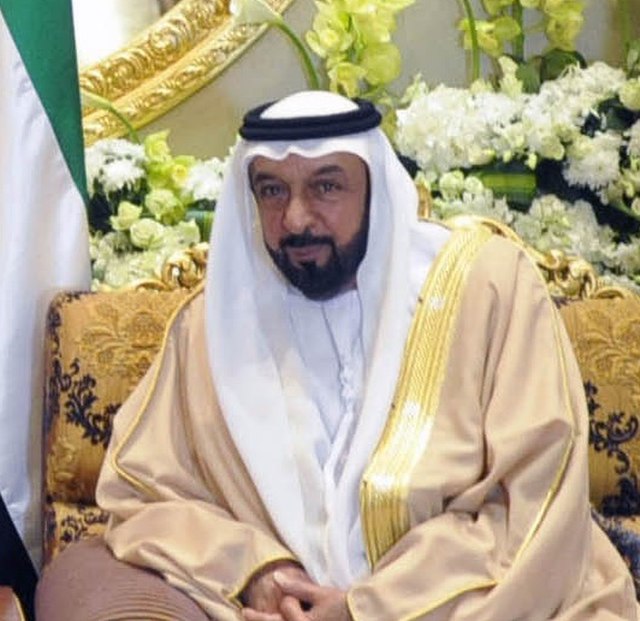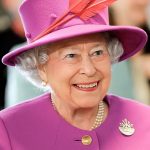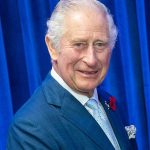Sheikh Khalifa bin Zayed Al Nahyan, the late President of the United Arab Emirates (UAE) and Ruler of Abu Dhabi, was a prominent figure in the political and economic landscape of the Middle East. Known for his substantial wealth and influential leadership, Sheikh Khalifa’s net worth and legacy continue to be a subject of interest and admiration. Let’s delve into various aspects of his life, including his net worth, early life, physical attributes, personal life, and illustrious career, providing a comprehensive overview of one of the most significant leaders in modern Arab history.
Sheikh Khalifa Net Worth
Sheikh Khalifa bin Zayed Al Nahyan, the ruler of Abu Dhabi until his passing in May 2022, amassed a staggering net worth of $18 billion. This immense wealth stemmed primarily from his role as the ruler of Abu Dhabi, known as the wealthiest emirate in the United Arab Emirates (UAE). Abu Dhabi’s immense oil reserves served as a cornerstone of Sheikh Khalifa’s wealth, providing substantial revenue streams.
As the leader of Abu Dhabi, Sheikh Khalifa held significant sway over the emirate’s vast oil resources, which played a pivotal role in his financial stature. The UAE possesses some of the world’s largest proven oil reserves, and Abu Dhabi, in particular, stands out as a major producer within the federation. With oil prices fluctuating over the years, Sheikh Khalifa’s net worth would have been subject to these market dynamics, but the fundamental resource wealth remained a consistent driver of his fortune.
In addition to oil, Sheikh Khalifa strategically utilized the Abu Dhabi Investment Authority (ADIA) to diversify his financial portfolio. The ADIA, established in 1976, functions as one of the world’s largest sovereign wealth funds, managing assets derived from Abu Dhabi’s oil revenues. Under Sheikh Khalifa’s leadership, the ADIA made prudent investments across various sectors globally, including real estate, infrastructure, and financial markets.
Sheikh Khalifa’s keen investment strategies further propelled his wealth accumulation. The ADIA’s global investments were meticulously chosen to generate substantial returns, adding to Sheikh Khalifa’s already considerable net worth. Real estate acquisitions in prime locations, infrastructure developments in burgeoning markets, and strategic positions in financial instruments all contributed to the growth of his fortune.
Despite fluctuations in global markets and the volatility of oil prices, Sheikh Khalifa’s net worth remained substantial throughout his reign. His adept management of Abu Dhabi’s oil wealth and strategic investments through the ADIA solidified his position as one of the world’s wealthiest individuals. Through prudent financial stewardship, Sheikh Khalifa’s legacy as a financial titan endures beyond his lifetime, leaving a lasting impact on the economic landscape of the UAE and beyond.
Sheikh Khalifa Early Life and Family
Sheikh Khalifa was born on January 25, 1948, in the city of Al Ain, part of the Emirate of Abu Dhabi. He was the eldest son of Sheikh Zayed bin Sultan Al Nahyan, the founding father and first President of the United Arab Emirates, and Sheikha Hassa bint Mohammed bin Khalifa Al Nahyan. Growing up in a politically influential family, Sheikh Khalifa was exposed to the intricacies of leadership and governance from a young age. His early education was grounded in the local traditions and culture of the UAE, complemented by formal schooling in Al Ain.
Sheikh Khalifa’s family lineage is deeply rooted in the history of the UAE. The Al Nahyan family has ruled Abu Dhabi since the 18th century, and Sheikh Khalifa’s father, Sheikh Zayed, was instrumental in the formation of the UAE federation in 1971. This rich heritage played a crucial role in shaping Sheikh Khalifa’s perspectives and leadership style, embedding in him a strong sense of duty towards his people and nation.
Sheikh Khalifa Height and Weight
As a leader, Sheikh Khalifa’s stature played a symbolic role in representing his influential leadership style. His physical presence often commanded respect and attention, underscoring his role as a key figure in both regional and global affairs. While his exact height and weight may remain undisclosed, his dignified bearing and confident demeanor left a lasting impression on those who encountered him.
While details about Sheikh Khalifa’s physical attributes, such as height and weight, are not widely publicized, he was known for his dignified and commanding presence. As a prominent leader, his stature was symbolic of his authoritative yet approachable leadership style.
Sheikh Khalifa Relationship Status and Personal Life
Sheikh Khalifa was married to Shamsa bint Suhail Al Mazrouei, with whom he had several children. The couple’s family life was kept relatively private, in line with the cultural norms of the UAE. However, it is known that his children have followed in his footsteps, taking on various roles within the government and business sectors of the UAE.
Despite his significant public responsibilities, Sheikh Khalifa was known to value his personal life and family deeply. His relationship with his siblings, particularly his brother Sheikh Mohammed bin Zayed Al Nahyan, who succeeded him as the Crown Prince of Abu Dhabi and later as the President of the UAE, was pivotal in maintaining the unity and stability of the UAE.
Sheikh Khalifa Career
Sheikh Khalifa bin Zayed Al Nahyan was a transformative leader whose impact on the UAE and the broader Middle East will be felt for generations. His strategic vision, commitment to economic diversification, and philanthropic efforts have left an indelible mark on his nation. As the UAE continues to evolve, Sheikh Khalifa’s legacy will undoubtedly remain a guiding force in its journey towards a prosperous and sustainable future.
Early Career
Sheikh Khalifa’s career began under the tutelage of his father, Sheikh Zayed, who was then the ruler of Abu Dhabi. In 1966, Sheikh Khalifa was appointed as the Ruler’s Representative in the Eastern Region of Abu Dhabi and the President of its legal system. This role marked the beginning of his public service, allowing him to gain valuable experience in governance and administration.
In 1969, he was appointed as the Crown Prince of Abu Dhabi, further solidifying his path towards leadership. As Crown Prince, Sheikh Khalifa took on increasing responsibilities, including overseeing the development of the emirate’s infrastructure and resources. His work during this period was instrumental in laying the foundations for the future prosperity of Abu Dhabi.
Leadership and Presidency
During his tenure as President of the UAE and Ruler of Abu Dhabi, Sheikh Khalifa bin Zayed Al Nahyan assumed office on November 3, 2004, succeeding his father. His ascension marked a pivotal moment in the nation’s history, setting the stage for a new chapter in governance and development. Immediately upon taking office, Sheikh Khalifa initiated a comprehensive restructuring of both the government of Abu Dhabi and the federal government of the UAE. This restructuring was aimed at streamlining administrative processes, enhancing governmental efficiency, and fostering an environment conducive to economic growth.
Under Sheikh Khalifa’s leadership, the UAE witnessed a concerted effort towards economic diversification. Recognizing the inherent volatility of oil prices and the risks associated with over-reliance on oil revenues, Sheikh Khalifa spearheaded initiatives to reduce the country’s dependency on this finite resource. Central to this strategy was the allocation of significant investments into non-oil sectors such as tourism, real estate, and renewable energy. These strategic investments not only served to mitigate the economic risks posed by fluctuations in oil prices but also positioned the UAE as a global economic powerhouse with a diverse and resilient economy.
The results of Sheikh Khalifa’s economic diversification efforts were profound. The UAE experienced robust growth across various sectors, with tourism, real estate, and renewable energy emerging as key drivers of economic expansion. The tourism sector witnessed substantial growth, fueled by investments in world-class infrastructure, attractions, and hospitality services. Similarly, the real estate sector flourished, buoyed by ambitious development projects that transformed the UAE’s skyline and attracted investors from around the world. Additionally, Sheikh Khalifa’s commitment to renewable energy paved the way for the UAE to become a leader in clean energy initiatives, further diversifying the nation’s energy portfolio and reducing its carbon footprint.
Economic Policies and Innovations
One of Sheikh Khalifa’s notable achievements was the establishment of the Abu Dhabi Economic Vision 2030, a strategic roadmap aimed at achieving sustainable economic development. This vision focused on diversifying the economy, enhancing the role of the private sector, and developing a knowledge-based economy.
Sheikh Khalifa also played a key role in the development of major projects such as Masdar City, a planned city project in Abu Dhabi focused on renewable energy and sustainability. This project highlighted his commitment to addressing global environmental challenges and positioning the UAE as a leader in green technology.
Philanthropy and Humanitarian Efforts
In addition to his economic initiatives, Sheikh Khalifa was known for his philanthropic efforts. He established numerous charitable foundations and supported various humanitarian projects both within the UAE and internationally. His contributions to education, healthcare, and disaster relief have left a lasting impact on countless lives.
The Khalifa bin Zayed Al Nahyan Foundation, established in 2007, is one of his most significant philanthropic endeavors. The foundation focuses on health and education initiatives, providing support and resources to underserved communities around the world.
Legacy
Sheikh Khalifa’s legacy is characterized by his visionary leadership and dedication to the welfare of his people. His efforts to modernize the UAE and diversify its economy have positioned the country as a major player on the global stage. His policies have ensured that the UAE remains resilient in the face of economic fluctuations and continues to grow and prosper.
His tenure as President was marked by a commitment to unity and progress. He maintained strong relationships with other emirates and fostered a sense of national pride and cohesion. His legacy continues to influence the UAE’s path forward, guiding the nation’s leaders as they build on the foundations he established.












